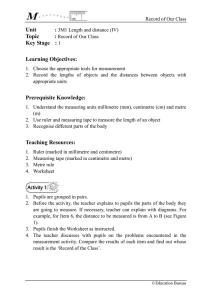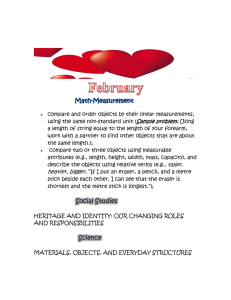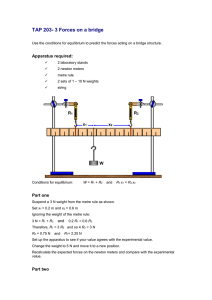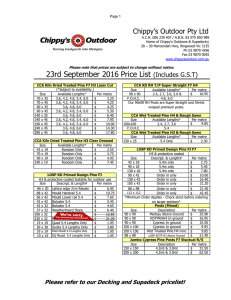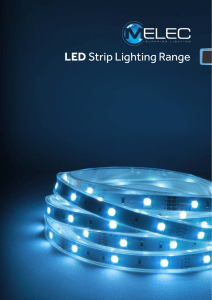Our Classroom
advertisement
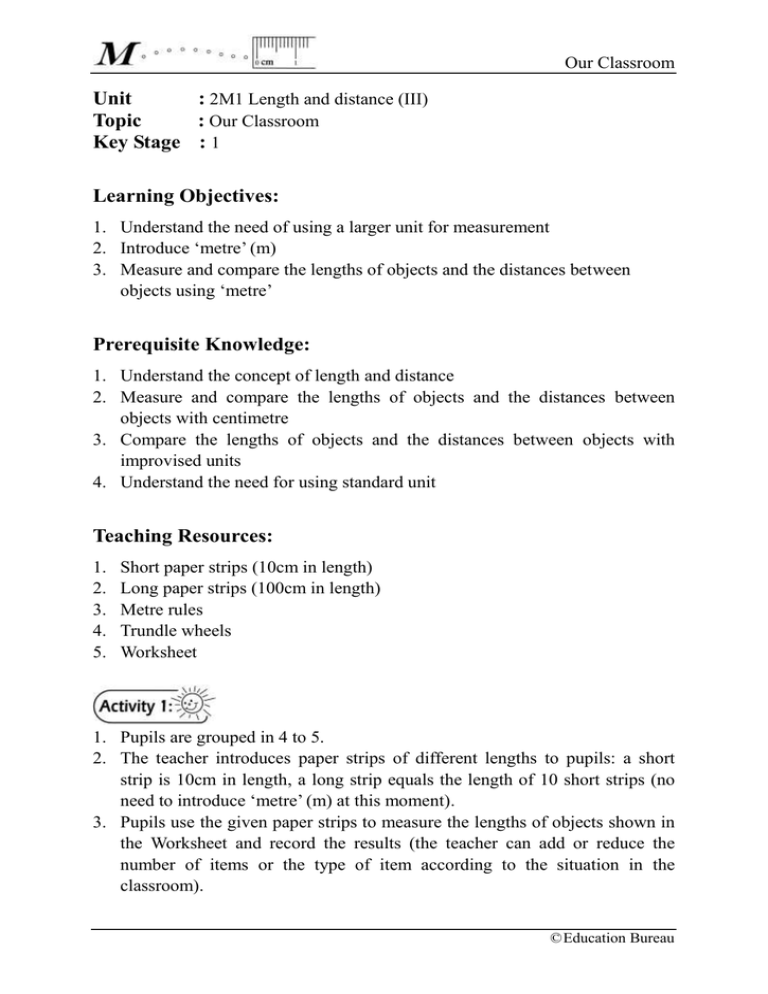
Our Classroom Unit : 2M1 Length and distance (III) Topic : Our Classroom Key Stage : 1 Learning Objectives: 1. Understand the need of using a larger unit for measurement 2. Introduce ‘metre’ (m) 3. Measure and compare the lengths of objects and the distances between objects using ‘metre’ Prerequisite Knowledge: 1. Understand the concept of length and distance 2. Measure and compare the lengths of objects and the distances between objects with centimetre 3. Compare the lengths of objects and the distances between objects with improvised units 4. Understand the need for using standard unit Teaching Resources: 1. 2. 3. 4. 5. Short paper strips (10cm in length) Long paper strips (100cm in length) Metre rules Trundle wheels Worksheet 1. Pupils are grouped in 4 to 5. 2. The teacher introduces paper strips of different lengths to pupils: a short strip is 10cm in length, a long strip equals the length of 10 short strips (no need to introduce ‘metre’ (m) at this moment). 3. Pupils use the given paper strips to measure the lengths of objects shown in the Worksheet and record the results (the teacher can add or reduce the number of items or the type of item according to the situation in the classroom). ©Education Bureau Our Classroom 4. Each group reports their results of measurement. Questions for Discussion: 1. If you have a choice, which paper strip would you choose for measuring the length of the blackboard? 2. Why do you choose this paper strip? 3. What objects do you think in our daily life are suitable to be measured by these two paper strips? Give examples. 1. The teacher introduces a standard unit ‘metre’ through questioning. 2. The teacher introduces ‘meter’ and 1 meter = 100 centimetres and guides the pupils to observe the length of a one-metre long paper strip (i.e. the ‘long paper strip’). 3. Pupils measure the lengths of the objects in the Worksheet and record the measurements. Questions for Discussion: 1. What objects are measured in ‘metre’ in daily life? 2. What objects in daily life are about 1 metre long? 3. Other than metre rule, which measuring tool(s) also use metre as a measuring unit? 1. 2. 3. 4. The teacher introduces the trundle wheel. Each group estimates the length of the classroom. Each group records their estimation on the blackboard. The teacher demonstrates how to use the trundle wheel to measure the length of the classroom and asks pupils to try. ©Education Bureau Our Classroom Generic Skills Fostered: Collaboration Skills Communication Skills Critical Thinking Skills Problem Solving Skills ©Education Bureau

